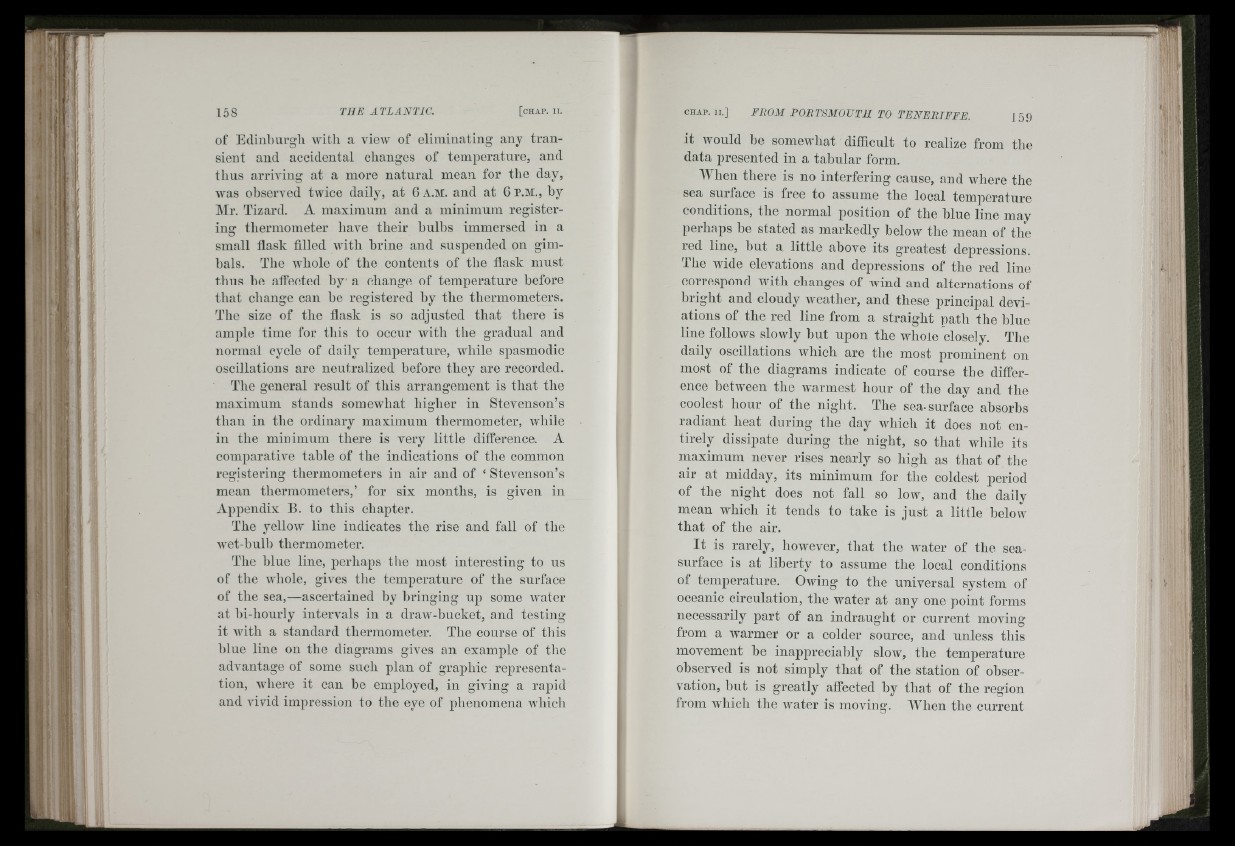
':i i•
I -
i
of Edinburgh with a view of eliminating any transient
and accidental changes of temperature, and
thus arriving at a more natural mean for the day,
was observed twice daily, at 6 a.m. and at 6 p.m., by
Mr. Tizard. A maximum and a minimum register-
inii thermometer have tlieir bulbs immersed in a
small flask filled Avitli brine and suspended on gimbals.
Tlie whole of tbe contents of the flask must
thus be affected by a change of temperature before
that change can be registered by the thermometers.
The size of the flask is so adjusted that there is
ample time for this to occur with the gradual and
normal cycle of daih' temperature, ndiile spasmodic
oscillations arc neutralized before they are recorded.
The general result of this arrangement is that the
maximum stands somewhat higher in Stevenson’s
than in the ordinary maximum thermometer, while
in the minimum there is very little difference. A
comparative table of the indications of the common
registering thermometers in air and of ‘ Stevenson’s
mean thermometers,’ for six months, is given in
Appendix B. to this chapter.
The yelloAv line indicates the rise and fall of the
wet-bulb thermometer.
The blue line, perhaps the most interesting to us
of the whole, gives the temperature of the surface
of the sea,—ascertained by bringing up some water
at bi-hourly intervals in a draw-bucket, and testing
it Avith a standard thermometer. The course of tbis
blue line on tbe diagrams gÌA'es an example of tlie
advantage of some such plan of graphic representation,
AA'liere it can be employed, in giving a rapid
and vivid impression to the eye of phenomena Avbicli
159
it Avould be somewhat difficult to realize from the
data presented in a tabular form.
When there is no interfering cause, and Avliere the
sea surface is free to assume the local temperature
conditions, the normal position of the blue line may
perhaps be stated as markedly below tbe mean of the
red line, but a little above its greatest depressions.
Tbe wide elevations and depressions of the red line
correspond Avitli changes of wind and alternations of
bright and cloudy weather, and these principal deviations
of the red line from a straight path the blue
line folioAvs slowly but upon the whole closely. The
daily oscillations which are the most prominent on
most of the diagrams indicate of course tbe difference
between the warmest hour of the day and the
coolest hour of tbe night. The sea-surface absorbs
radiant heat during the day Avliicli it does not entirely
dissipate during the night, so that Avliile its
maximum never rises nearly so high as that of tlie
air at midday, its minimum for the coldest period
of the night does not fall so low, and the daily
mean which it tends to take is just a little below
that of tbe air.
It is rarely, however, that the water of the sea-
surface is at liberty to assume the local conditions
of temperature. Owing to the uniA'crsal system of
oceanic circulation, tbe water at any one point forms
necessarily part of an indraught or current moving
from a warmer or a colder source, and unless tins
movement be inappreciably slow, tbe temperature
observed is not simply tbat of the station of observation,
hut is greatly affected by that of the region
from Avhich the water is moving. When the current